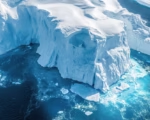China has experienced a dramatic loss of glacier coverage over the past six decades, with new research revealing that nearly 26 percent of its glaciers have vanished since the 1960s. This significant reduction in glacier mass has been attributed to the rapid increase in global temperatures, which has accelerated the melting process. Official reports confirm that approximately 7,000 small glaciers have completely disappeared from the country’s landscape. With warming trends continuing to intensify, the retreat of glaciers has become a pressing concern, particularly in regions that rely on these ice masses for freshwater.
A study published by the Northwest Institute of Eco-Environment and Resources, part of the Chinese Academy of Sciences, tracked the decline in China’s glaciers. The research found that by 2020, China’s glacier area had shrunk to nearly 46,000 square kilometers, a sharp drop from around 59,000 square kilometers between 1960 and 1980. During the same period, the number of glaciers dropped from roughly 46,000 to 39,000, highlighting the dramatic changes in the region’s glacial landscape. This reduction in glacier mass is indicative of broader global warming patterns and underscores the environmental changes taking place in the region.
The impact of glacier loss extends beyond environmental changes; it has profound implications for water security, particularly in areas that rely on glacier-fed rivers for freshwater. As glaciers retreat, there is growing concern over future water shortages, with many regions facing increased competition for limited resources. The Tibetan Plateau, home to a large proportion of China’s glaciers, is particularly vulnerable. Often referred to as the “Third Pole” due to its vast ice reserves, the plateau plays a critical role in supplying water to millions of people. As the glaciers melt, the region’s ability to sustain water supplies could be jeopardized, affecting both local populations and ecosystems.
In response to the accelerating glacier melt, Chinese authorities have initiated several measures to slow the process. Technological interventions, such as artificial snow systems and snow blankets, have been deployed in certain areas in an attempt to protect the remaining glaciers and slow their retreat. While these efforts may offer some temporary relief, experts warn that more significant, long-term solutions are needed to address the root causes of glacier loss and mitigate the broader impacts of climate change. The ongoing decline of glaciers in China serves as a stark reminder of the urgent need for global action to combat warming and protect critical natural resources.


















